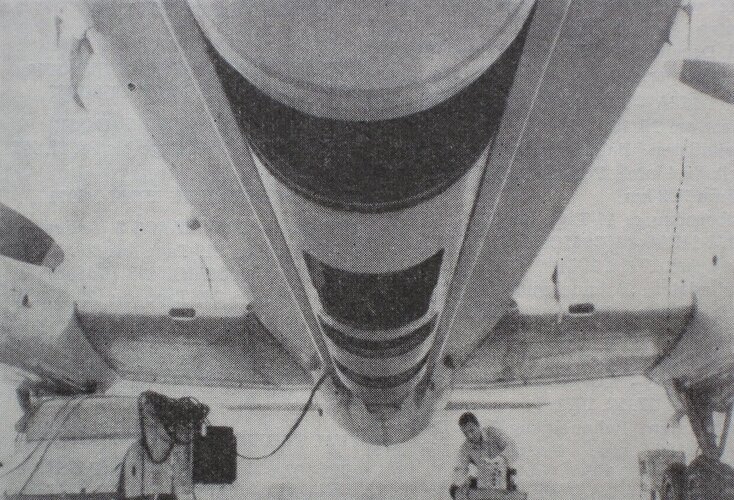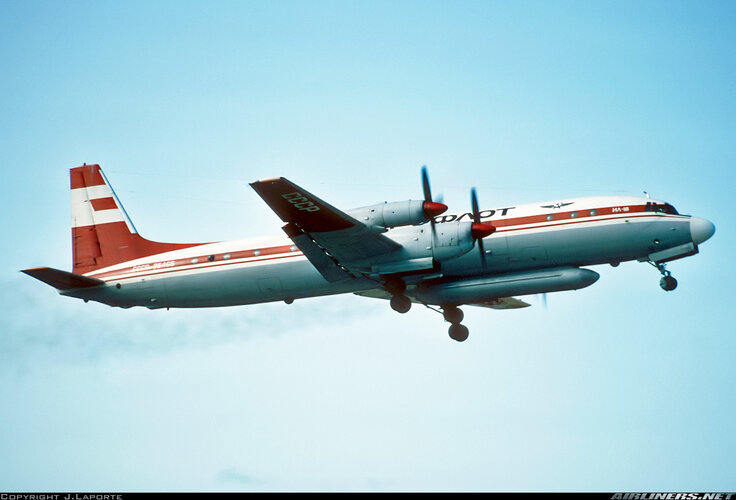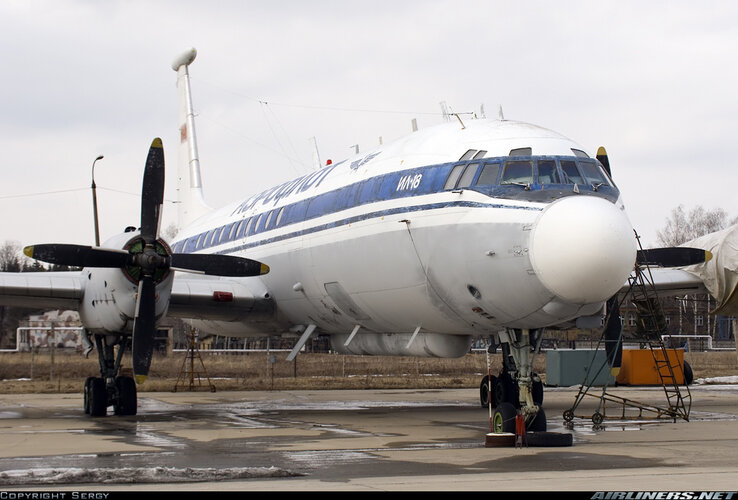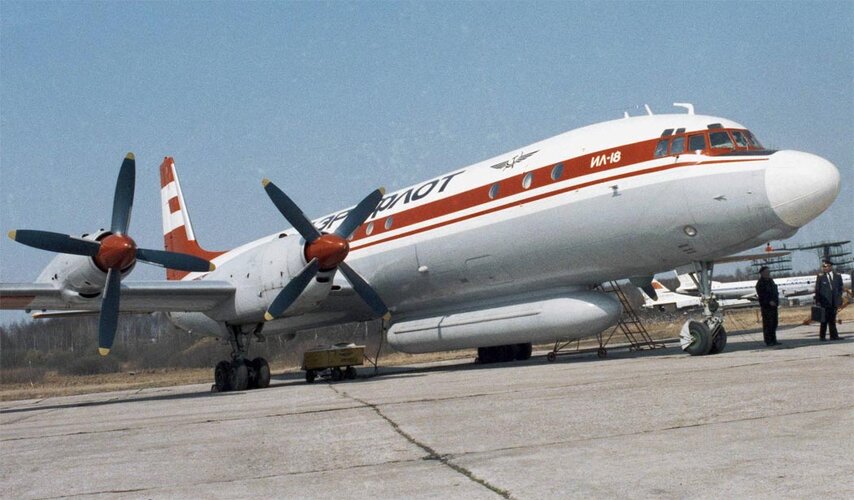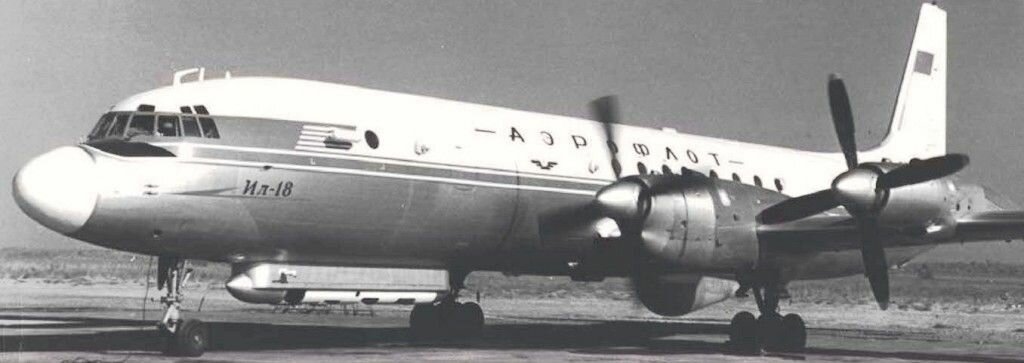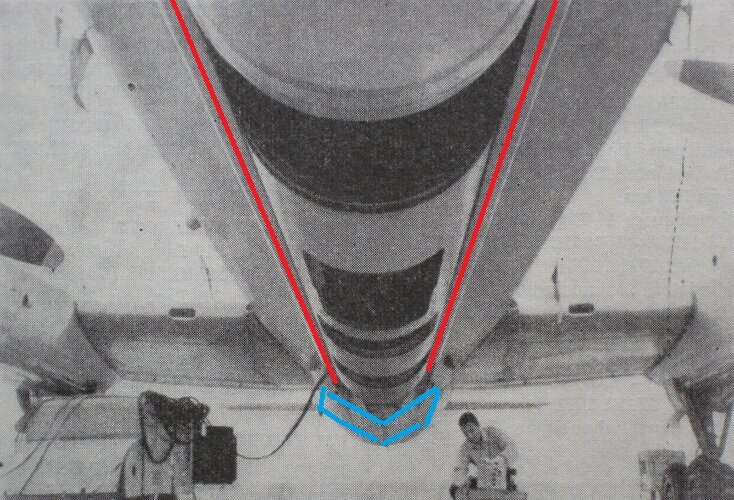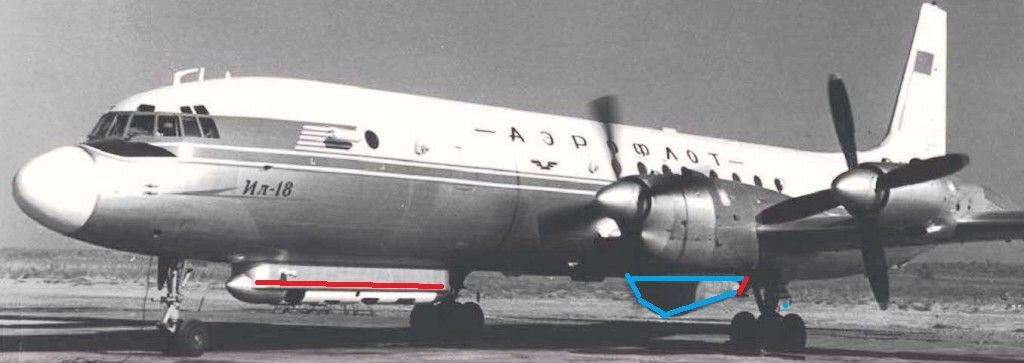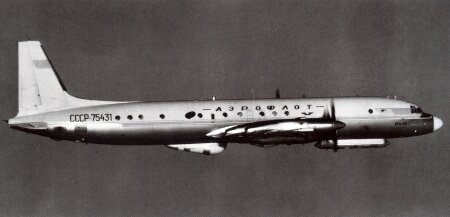https://ruslet.webnode.cz/technika/ruska-technika/letecka-technika/s-v-iljusin/il-18ggo/
Machine translation
"The Il-18 (Coot) medium-heavy four-engine turboprop transport aircraft, thanks to its long range and endurance, high operational reliability, low operating costs, spacious cabin and the ability to operate from airports with a relatively short take-off and landing runway, became the basis of a whole range of specials. One of them was the Il-18GGO type special for geophysical exploration. The only copy of this special was created by the conversion of the Il-18V aircraft (V. No. 180002003 / CCCP-75431) from Aeroflot. This machine was converted to a special Il-18GGO type at the Main Geophysical Observatory (GGO) A.I. Vojeikova. The latter took it over at the end of 1972 or at the beginning of 1973. The operator of the only specimen of the Il-18GGO special type was directly GGO. Leningrad-Pulkovo Airport became his home base. Special Il-18GGO (CCCP-75431) flew in the livery used by Aeroflot on pre-1973 Il-18 (Coot) series aircraft and participated in a number of diverse research programs. For example, on April 3, 1975, he went to Karaganda, Kazakhstan, to conduct a survey of arable land. In the Karaganda, Chelynograd, and Kokchetav regions of Kazakhstan, they were just then preparing for sowing, so they needed to know how much water they would need for irrigation. In addition to the special Il-18GGO (CCCP-75431), one specially modified two-engine turboprop regional transport aircraft of the type An-24 (Coke) and one photogrammetric special of the type An-30 (Clank A) participated in the aforementioned mission. The special Il-18GGO (CCCP-75431) was used for the same purpose again in the spring of 1977. This time, however, it visited the regions that were the main producers of cereals during the USSR. Specifically, it was the Krasnoyarsk region, which extends in the western part of Siberia, the Stavropol region, which is in turn located in the south of Russia, and the southern regions of Ukraine. Meanwhile, in 1976, the special Il-18GGO (CCCP-75431) joined, together with the Il-18V Meteor (CCCP-75716), the research program POLEX-Sever-76 (Polar experiment-North-76). As part of the aforementioned program, Il-18GGO (CCCP-75431) and Il-18V Meteor (CCCP-75716) aircraft operated from the Amderma airport and worked in cooperation with the research vessel Professor Vize (Akademik Kurchatov class). However, the Il-18GGO (CCCP-75431) aircraft also participated in the SAMEX (Soviet-American Microwave Experiment) research program, which took place the same year. Its goal was to measure the state of the sea and the atmosphere in two defined areas of the Pacific Ocean. While one of them was located near the Kamchatka Peninsula, the other was laid out near the Kuril Islands. In addition to the Il-18GGO (CCCP-75431), the SAMEX research program also involved a specially modified American Convair CV 990 Coronado four-engine jet transport aircraft, the Soviet research vessel Akademik Koroljov (Korolev class) and the American Nimbus-5 and Nimbus-6 satellites. However, the operation of the special Il-18GGO (CCCP-75431) was adversely affected by the collapse of the USSR, which occurred in 1991, together with the subsequent severe economic crisis in Russia. Since there were no funds for the operation of this machine under these conditions, it was definitively grounded already in 1992. Then, after the previous dismantling of all special equipment, it was converted to a cargo model Il-18Gr and subsequently sold to NPO Vzlet."

